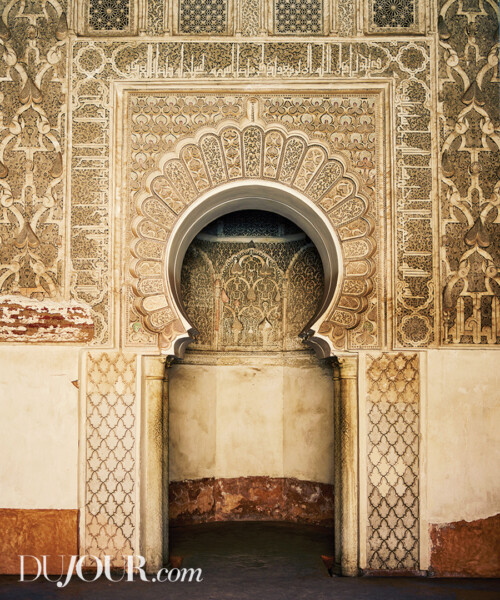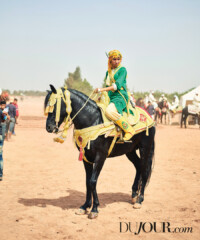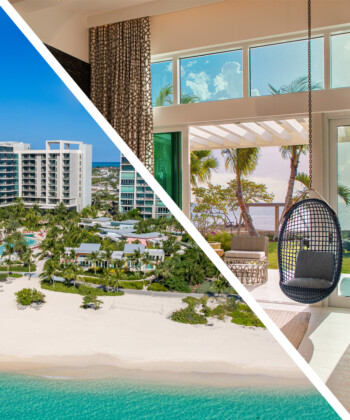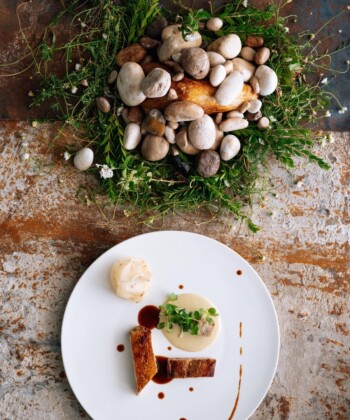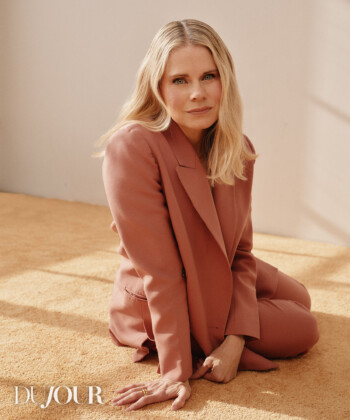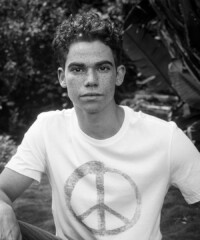About halfway through our 4x4s slow climb over central Morocco’s High Atlas Mountains, somewhere around the 7,400-foot Col du Tichka pass and its notably non-existent guardrails, I was pretty glad I had decided not to get behind the wheel myself. Though I fancy myself a decent navigator, having mastered the art of defensive driving on New England’s formidable thruways (also, I wondered, is a road trip really a road trip if you’re being chauffeured?), the warnings about this particular journey were not mere hype. Breathtaking views of valleys dotted with sheep and their Berber herdsmen along with imposing kasbahs—ancient citadels perched atop cliffs high enough to block the sun—were delivered courtesy of blind spots, sudden stops and vertigo-inducing switchbacks. Add to that a backseat photographer whose personal catchphrase was, “Can we just pull over a second?” and it soon became evident that this was a road best commanded by someone who’d driven it before.
The photo op requests were, of course, understandable. The creators of our itinerary, the founders of New York City-based luxury travel outfitter Epic Road, had long ago told me that the Atlas Mountains pass—part of the four-hour drive between the Moroccan Sahara and Marrakech—was one of the world’s most spectacularly scenic commutes, a geographically diverse stretch that shifts from desert to snow to city over the course of a few hours. I’d been thinking of it ever since. The guys at Epic Road also said the whole thing would be a hell of a lot more enjoyable if someone else was in charge of the actual driving. Now, I was relieved I’d taken their word for it.
A road trip had seemed appropriate: We’d spent the previous four days bumping through the Sahara desert as spectators at the Rallye Aïcha des Gazelles, an all-women off-road car rally in which teams of two navigate from checkpoint to checkpoint over the course of eight days, using only topographic maps, a compass and the stars to guide them. Founded nearly three decades ago by French entrepreneur and car aficionado Dominique Serra, the rally is held every March, and is designed to promote female empowerment and camaraderie in a traditionally male-dominated sport—albeit in a country that doesn’t quite view women as equals (though whose does, these days). After watching the Gazelles conquer the course for no prize other than to satisfy their collective love of adventure, the open road called. We’d start a few hours from the rally’s finish line, in Skoura, a pre-Sahara oasis town filled with date palms. From there, we’d travel over the snowcapped mountains and down into Marrakech, eventually continuing on to the coastal town of Essaouira—a seven-hour journey that runs the topographical spectrum and ends on the shores of the Atlantic Ocean.
Morocco has long enchanted travelers—and artists and dreamers, not to mention interior designers—for its offerings of craft, cuisine and culture that are both exotic and relatively accessible: The country is only nine miles by water from Europe, and six hours by air from New York. And there are plenty of reasons to go now—most notably the new Musée Yves Saint Laurent opening this fall at Marrakech’s historic Jardin Majorelle, along with a host of new luxury hotels throughout the country—even as the current U.S. administration would have Americans believe otherwise. We departed for Morocco three days after the announcement of a new regulation preventing passengers flying from 10 Muslim-majority countries, including Morocco, from carrying on electronic devices—such as laptops and fancy cameras of the sort professional photographers rely on. Whether intentional or not, regulations like these discourage travel to these countries—particularly for leisure. But the truth is that while Morocco is nearly 99 percent Muslim, moderate Islam prevails. Though it can be hard to get a drink, it’s not impossible; headscarves for women are certainly optional; and people are friendly and overall seem very happy to have you there. I never once felt unsafe or unwelcome.
Skoura is a Berber– and Bedouin–inhabited patch of olive, date palm and apricot trees and a serene, if slightly unlikely, home to one of Morocco’s most luxurious hotels. Tucked away at the end of a long dirt road, Dar Ahlam—roughly translated as “house of dreams”—is a restored 19th century traditional kasbah, a labyrinth of plaster tadelakt and candlelit halls, with corners full of pillows and poufs and a staff of 85 to care for no more than 30 guests at a time. Founded by a Parisian actor and events coordinator, Dar Ahlam feels less like a hotel than a magical guest house: Visitors come here for scenic 4×4 excursions and camel rides in the desert, as well as tours through the small Berber villages surrounding Skoura—but also for the element of surprise. Meals consider dietary preferences and restrictions but are based on the chef’s whim and take place in different on- and off-site locations each day, from picnic breakfasts in a hidden garden somewhere on the property’s nine acres, to champagne sundowners on rugs atop golden dunes. It is the sort of place that perfectly kicks off a vacation, getting you in the mood, or provides its sentimental end.
After a single, short night at Dar Ahlam, we were on our way. Winding away from the hotel along a route used for centuries by desert traders to transport gold, ivory, salt and camels, the unique scenery unfolded before us: villages that have existed, in many cases largely unchanged, for centuries; snowcapped mountains in view even as you feel the unforgiving heat of the desert on your back. Every so often there was water—detectable by a sudden sprouting of date palms, olive and pomegranate trees and Damask rose bushes. Those who opt not to drive over the Atlas in one go can detour to one of several renovated kasbahs along the way, including Kasbah Du Toubkal in Imlil, and Kasbah Tamadot, Richard Branson’s spot in Asni. Still, it’s hard not to want to press on to Marrakech.
As we entered the city toward the end of the day, the gray light of the mountains turned pink and red. Marrakech is an aesthete’s heaven with no shortage of design master classes, starting with some of the world’s most beautiful hotels. The medina, or Arab quarter, is home to an estimated 1,000 riads, traditional courtyard mansions now operating as guesthouses, as well as most of the shops or “souks.” We opted to stay at Riad Mena, a tiny six-room riad about a 10-minute walk from the snake charmers and Barbary macaques of the famous Jemaa el Fna square. Run by art pundit and German expat Philomena Schurer Merckoll, Riad Mena is at once beautiful and homey, which might be expected, given that it was intended to be used as a private house for Merckoll’s retired mother. It turned out to be too pretty not to share with guests. To create the Moroccan-inflected mid-century modern interiors, Merckoll worked with friend Romain Michel-Meniere, a French-Swiss expat and one of the city’s best-known interior designers, largely calling on pieces found in the souks of the medina. A small staff maintains the day-to-day, always on hand to offer a coffee, a cocktail or a full meal should you so desire (they’ll also gladly arrange an en suite massage with Joel, who knows just what to do with tired feet).
But back to the souks: The shopping in Marrakech, as one might expect, could enthrall an interiors fanatic for days—which sadly, we did not have. So we went the efficient route at Mustapha Blaoui, a one-stop, Westerner-friendly destination shop featuring multiple levels of the best the souks have to offer. You’ll pay a bit more, but the good news is that you’ll have time left over to catch the sunset over the square at the appealingly low-key La Terrasse des Épices, one of the few spots in the medina to get a cocktail. If you have a few days, or are inclined to price shop, you can hire a guide who can help you focus (rugs, pillows, pottery, caftans, all of the above) and negotiate with minimal haggling, which can get exhausting. Mustapha Chouquir came highly recommended: He’s so in-demand that he’s the basis of an upcoming guidebook. No matter what, don’t fall for the “women’s co-op” rug scam—if your guide takes you to a shop that up-charges by as much as 100 times and claims that profits benefit the Berber women’s cooperative making the rugs, don’t bite. In almost every case, the women receive a scant percentage.
One gets the sense there will never be enough time in Marrakech, and too quickly we were back in our car heading towards Essaouira, a two-hour drive west through fertile valleys, past fields of men (and a few women) preparing for Fantasia—a traditional horsemanship performance that’s sort of a cross between a rodeo and a carnival—and row after row of argan trees. Many of the trees, notably, have goats in them. The official line here is that the goats are mad for the argan nut, and climb the trees to eat as many of them as they can stomach. But coming upon a tree full of nine or ten goats standing on bare branches, with plenty of leafier and far more appetizing-looking trees containing not a single goat nearby, it was hard not to wonder if this tree-climbing act is less a quirky Moroccan goat habit than a source of profit for the handlers who mill around below, collecting tips from delighted tourists who stop to snap photos. (The goats are cute, though, and to be fair, did seem well fed.)
The region is also a surprise, and surprisingly prolific, producer of wine. Leading the charge is winemaker Charles Melia, who left his family’s vineyard in Chateauneuf-du-Pape nearly 20 years ago to turn 86 acres of valley land into Les Domaines du Val D’Argan. It is now one of Morocco’s most productive wineries, and their product is set, it so happens, to be imported to the U.S. for the first time this fall. We only stopped for lunch, but a five-room guesthouse allows for much longer stays. Guests can linger among the vines or by the pool with a glass of house rosé, or learn the art of winemaking from one of several Muslim winemakers on site. They make great wine, even if they don’t get to taste it.
Ten minutes later, you enter Essaouira, a UNESCO World Heritage Site and a working fishing port with the feral cat population to show for it. Suddenly, the air changes—you’ve arrived at the sea. Life here is a lot slower, the sun-bleached buildings a lot whiter than in Marrakech, and the people notably calmer (there are also far fewer of them). The medina is filled with shopkeepers selling spices, caftans and leather goods, but most of the action’s at the beach, where locals windsurf and camels give rides along the sand.
In Essaouira, we stayed at Dar Maya, a hidden oasis of clean design in the center of the medina, owned by ex-Londoner Gareth Turpin, who also rents his charming Marrakech house through Airbnb (search “medinaRose”). For dinner, Turpin sent us to eat at the bar at La Table by Madada, where surprisingly stiff cocktails are paired with seafood so fresh you likely saw it pulled ashore earlier. The restaurant also offers cooking classes, and there’s a boutique hotel upstairs. The place has the laid-back feel, and the laid-back clientele, of an old favorite. It’s easy to feel at home—a fitting, and welcome, end to a whirlwind journey. Sometimes life begins at the end of the road.


























